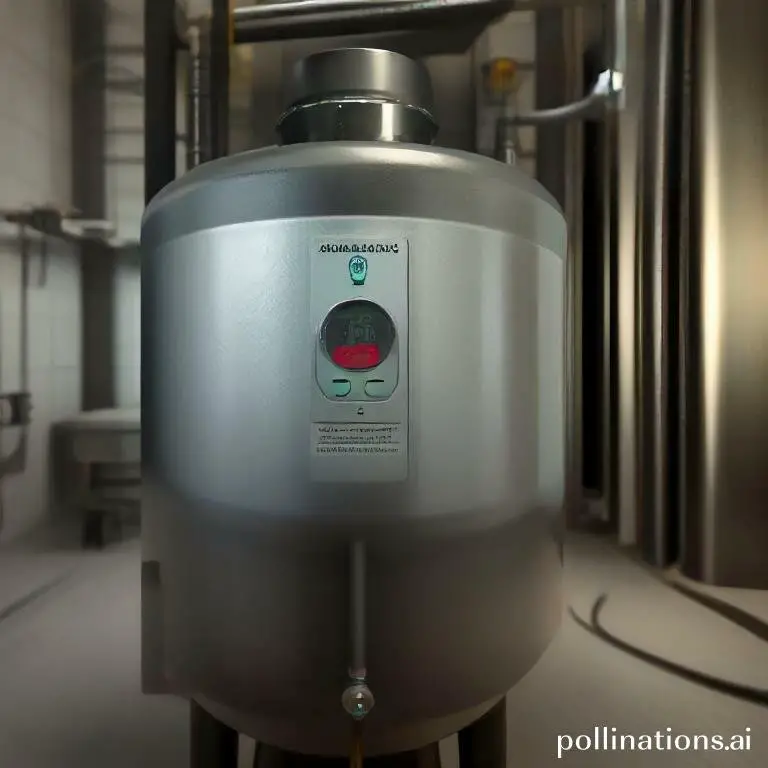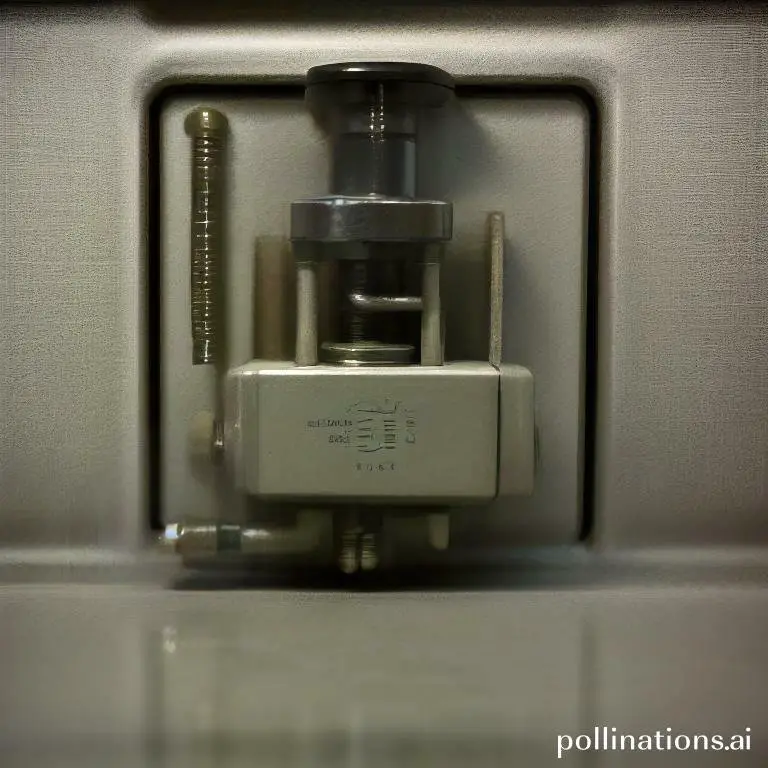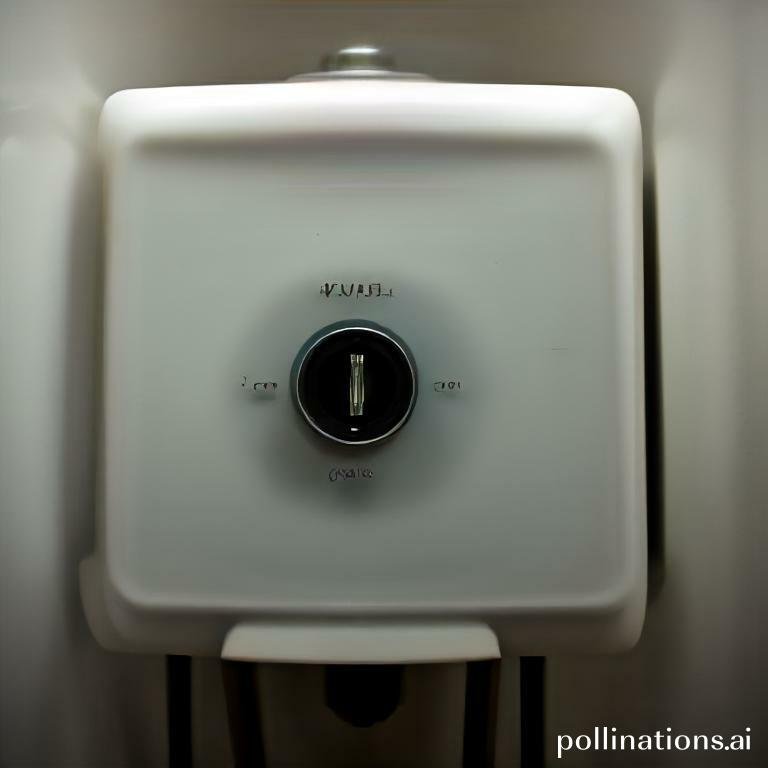
II. Common issues with temperature sensor calibration include inaccurate readings, incorrect temperature settings, and malfunctioning sensors.
III. Troubleshooting these issues involves checking the sensor’s placement, wiring, and connections, as well as adjusting the temperature settings and replacing the sensor if necessary.
Water heater temperature sensor calibration is an essential aspect of ensuring that your water heater operates efficiently and effectively. A properly calibrated temperature sensor helps prevent overheating, which can lead to damage and safety hazards.
Troubleshooting temperature sensor calibration issues can seem daunting, but with the right knowledge and tools, it can be a straightforward process. In this guide, we will provide you with step-by-step instructions on how to troubleshoot water heater temperature sensor calibration issues.
Discerning Water Heater Temperature Sensor Calibration
In a water heater, a temperature sensor is a crucial component that helps regulate the temperature of the water. It senses the current temperature and sends the information to the control board, which then adjusts the heating element accordingly. This ensures that the water is heated to the desired temperature and prevents any potential overheating or scalding.
1. What is a temperature sensor in a water heater?
A temperature sensor in a water heater is a device that measures the temperature of the water. It is usually located near the heating element and uses a thermistor or a similar technology to detect changes in temperature.
2. How does the temperature sensor work?
The temperature sensor works by utilizing the principle of resistance changes in response to temperature variations. A thermistor, for example, has a higher resistance at lower temperatures and a lower resistance at higher temperatures. This change in resistance is converted into an electrical signal that is then transmitted to the control board.
3. Why is calibration important?
Calibration of the temperature sensor is crucial to ensure accurate temperature readings and proper functioning of the water heater. Over time, temperature sensors may become less accurate due to factors such as mineral deposits or wear and tear. Calibration involves adjusting the sensor to match the actual temperature, allowing for precise control of the water temperature and improved energy efficiency.
Proper calibration of the temperature sensor helps prevent issues such as water that is too hot, which can lead to scalding, or water that is not hot enough, resulting in discomfort. It also ensures optimal performance and longevity of the water heater by preventing excessive strain on the heating element.
For example, if the temperature sensor is not calibrated correctly and consistently reads temperatures lower than the actual water temperature, the heating element may work harder than necessary to reach the desired temperature. This can lead to increased energy consumption and potentially shorten the lifespan of the heating element.
| Temperature Sensor Calibration | Benefits |
|---|---|
| Accurate temperature control | Prevents scalding and discomfort |
| Improved energy efficiency | Reduces energy consumption |
| Prolongs heating element lifespan | Prevents excessive strain on the heater |
Signs of a Mis-calibrated Temperature Sensor
A mis-calibrated temperature sensor can cause various issues with your water heater. Indispensable to be aware of the signs that indicate a problem with the temperature sensor so that you can address it promptly. Here are some common signs to look out for:
1. Water temperature fluctuations
If you notice that the water temperature in your home is constantly fluctuating, it could be a sign of a mis-calibrated temperature sensor. The sensor may not be accurately detecting the temperature of the water, leading to inconsistent hot water supply. This can be particularly inconvenient during showers or when using hot water for various tasks.
2. Inaccurate temperature readings
Another indication of a mis-calibrated temperature sensor is when the readings on your water heater display do not match the actual temperature of the water. You may set the temperature to a specific level, but the sensor may be providing inaccurate readings, resulting in water that is either too hot or too cold. This can be both uncomfortable and potentially dangerous, especially if the water is scalding hot.
3. Water heater not heating up
If your water heater is not heating up at all, it could be due to a mis-calibrated temperature sensor. The sensor plays a crucial role in regulating the temperature of the water, and if it is not functioning properly, the heater may not be able to heat the water to the desired level. This can leave you without hot water for essential tasks such as washing dishes or doing laundry.
Essential to address any issues with your temperature sensor promptly to ensure the proper functioning of your water heater. If you experience any of these signs, it is recommended to contact a professional technician who can diagnose and resolve the problem. Regular maintenance and calibration of the temperature sensor can help prevent such issues in the future, ensuring a reliable and consistent supply of hot water in your home.
Steps to Troubleshoot Water Heater Temperature Sensor Calibration
1. Turn off power supply
Before attempting to troubleshoot the water heater temperature sensor calibration, it is crucial to ensure your safety by turning off the power supply. This will prevent any electrical mishaps during the process.
2. Locate temperature sensor
The next step is to locate the temperature sensor in your water heater. This sensor is responsible for measuring the temperature of the water and relaying it to the control system. It is usually located near the heating element or on the side of the tank.
3. Check for damage or corrosion
Inspect the temperature sensor for any signs of damage or corrosion. Damaged or corroded sensors may not provide accurate temperature readings, leading to issues with the water heater’s performance. If you notice any damage, it may be necessary to replace the sensor.
4. Test the resistance of the temperature sensor
To determine if the temperature sensor is functioning properly, you can test its resistance using a multimeter. Follow the manufacturer’s instructions to measure the resistance at room temperature. If the resistance deviates significantly from the expected value, it may indicate a faulty sensor.
5. Adjust the calibration settings
If the temperature sensor is working correctly but providing inaccurate readings, you can try adjusting the calibration settings. Refer to the water heater’s manual or contact the manufacturer for specific instructions on how to calibrate the temperature sensor. Make small adjustments and monitor the water temperature to ensure accuracy.

Common Mistakes to Avoid When Calibrating Water Heater Temperature Sensor
In the realm of calibrating the water heater temperature sensor, indispensable to avoid certain common mistakes that can lead to inaccurate readings and potential problems. By embracing the proper procedures and being aware of these mistakes, you can ensure the optimal performance of your water heater and avoid costly repairs. Here are some key mistakes to avoid:
1. Over-tightening the sensor
One common mistake is over-tightening the sensor during the calibration process. This can cause damage to the sensor and affect its accuracy. Indispensable to follow the manufacturer’s instructions and use the appropriate tools to tighten the sensor to the recommended torque specifications.
2. Incorrectly adjusting the calibration settings
Another mistake to avoid is incorrectly adjusting the calibration settings of the water heater temperature sensor. This can result in inaccurate temperature readings and potentially cause the water heater to operate at unsafe temperatures. It is crucial to carefully follow the calibration instructions provided by the manufacturer and make precise adjustments as needed.
3. Not testing the sensor before reassembling
One often overlooked mistake is failing to test the sensor before reassembling the water heater. After calibrating the sensor, vital to test its functionality to ensure that it is reading temperatures accurately. This can be done by using a separate thermometer to compare the readings with those displayed on the water heater control panel. If there are significant discrepancies, further calibration may be required.
| Mistake | Consequence |
|---|---|
| Over-tightening the sensor | Potential damage to the sensor and inaccurate readings |
| Incorrectly adjusting the calibration settings | Inaccurate temperature readings and potential safety hazards |
| Not testing the sensor before reassembling | Potential inaccuracies in temperature readings |

When to Call a Professional
In the realm of troubleshooting, it’s important to know your limits. Lack of experience or knowledge can lead to further problems or even safety hazards. In such situations, calling a professional is the best course of action.
Lack of experience or knowledge in troubleshooting
If you find yourself facing an issue that you have little to no experience in, it’s best to leave it to the experts. Attempting to fix something without the necessary know-how can result in costly mistakes. By calling a professional, you can ensure that the problem will be properly diagnosed and resolved.
Safety concerns
Some issues involve potentially dangerous components, such as electrical or plumbing systems. If you are not well-versed in handling these types of situations, it’s crucial to seek professional help. They have the expertise and tools to address the problem safely, minimizing the risk of accidents or injuries.
Complex issues
Certain problems may be more complex than they initially appear. Without the proper skills and experience, attempting to tackle these issues can lead to further complications. Professionals have the necessary training and knowledge to handle complex repairs efficiently and effectively.
To emphasize the importance of calling a professional, consider the following example:
- Example: A homeowner attempts to fix a leaky pipe without any plumbing experience. In the process, they accidentally damage the pipe further, resulting in a burst pipe and water damage to their property. Calling a professional plumber at the first sign of trouble would have prevented this costly mistake.
| Issue | When to Call a Professional |
|---|---|
| Lack of experience or knowledge | If you are unfamiliar with the problem or lack the necessary skills. |
| Safety concerns | When dealing with potentially dangerous components or systems. |
| Complex issues | If the problem is beyond your expertise or requires specialized tools. |
Bottom Line
Proper calibration of the temperature sensor in your water heater is crucial for efficient and safe operation. If you notice that your water is not heating up to the desired temperature or the temperature is fluctuating, it may be time to troubleshoot the sensor calibration. Start by checking the wiring and connections, and then test the sensor with a multimeter. If the sensor is faulty, it will need to be replaced. Regular maintenance and inspection of your water heater can help prevent sensor calibration issues from occurring. Remember to always follow manufacturer instructions and safety guidelines when working with your water heater.
By taking the time to troubleshoot and calibrate your water heater temperature sensor, you can ensure that your system is running smoothly and efficiently. This will not only save you money on energy bills, but also help prevent potential safety hazards. Don’t hesitate to seek professional help if you are unsure about any aspect of the process.
Read More:
1. Role Of Water Heater Temperature In Preventing Legionella
2. Troubleshooting Water Heater Temperature Not Reaching Setpoint














